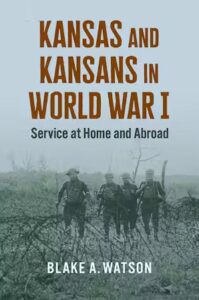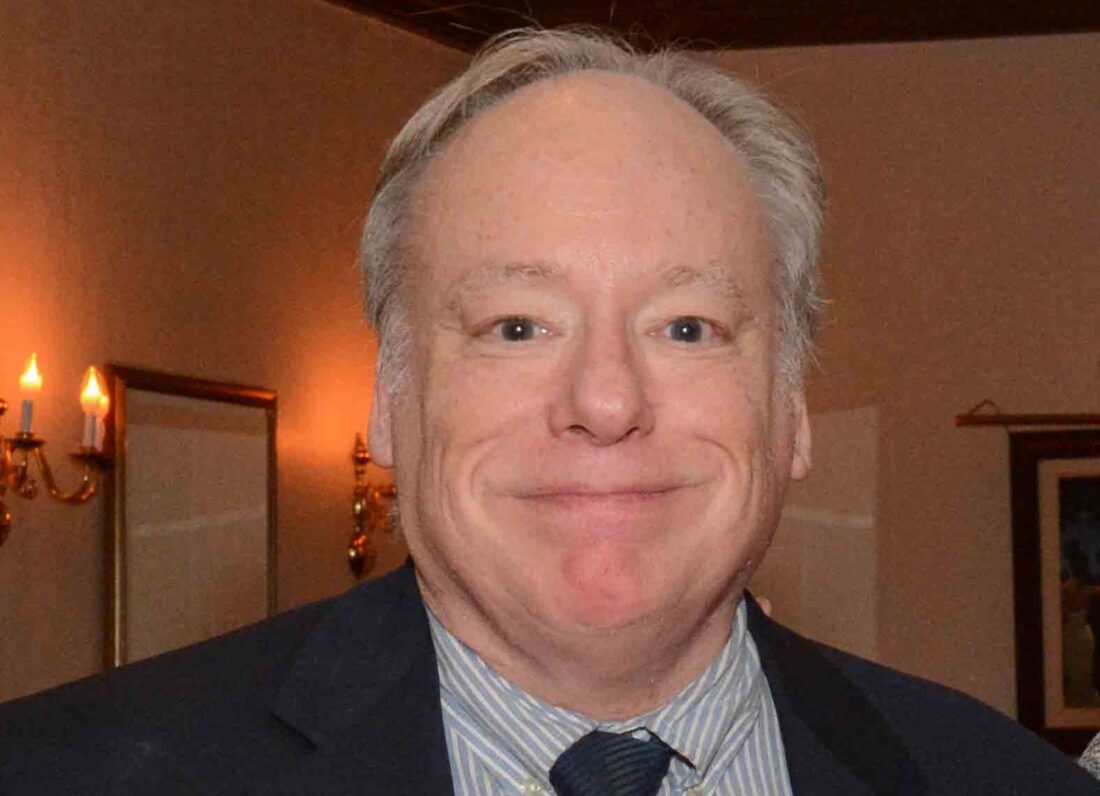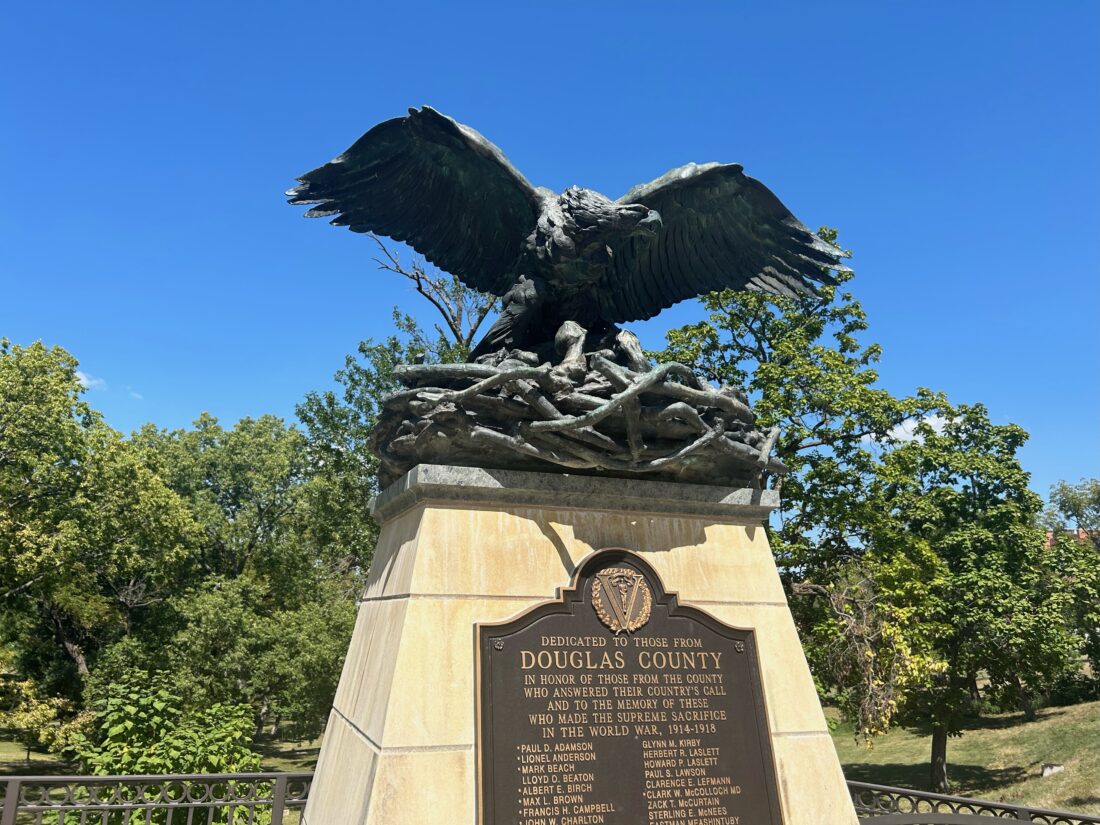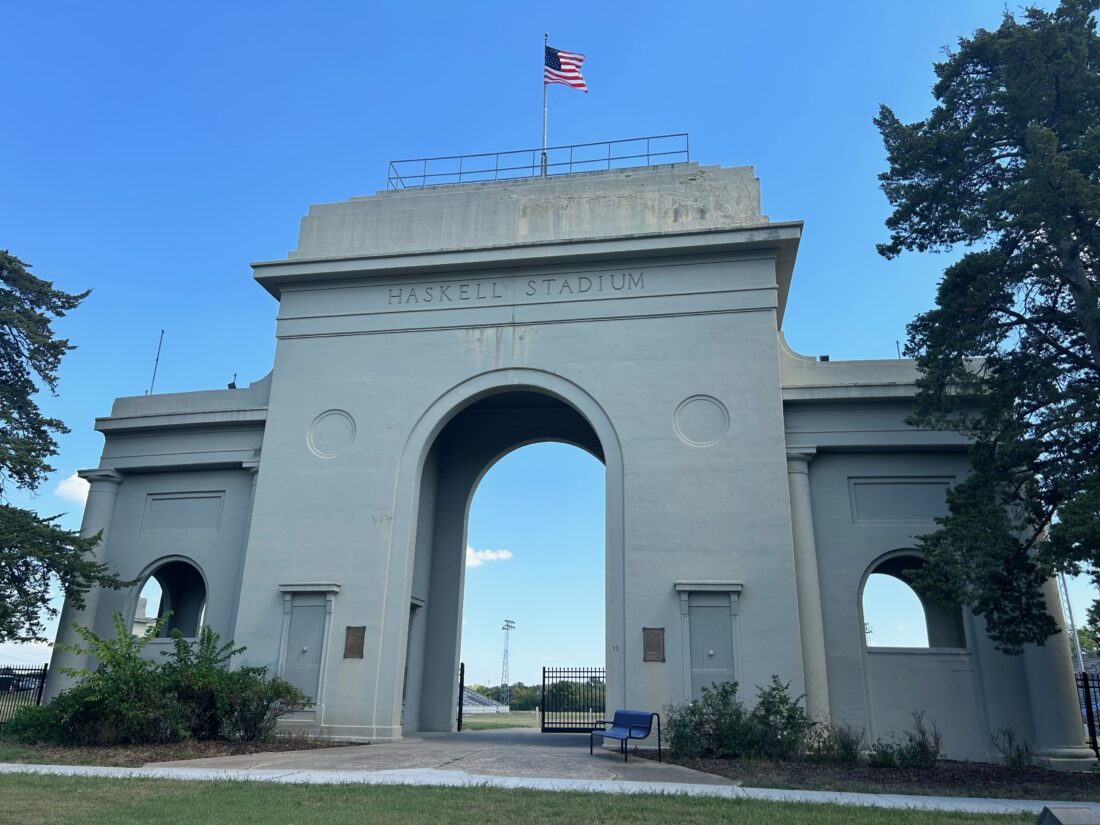
The cover of “Kansas and Kansans in World War I.”
Before becoming a petroleum engineer — before becoming an NFL player — before even graduating high school, Ralph Nichols was shot in the cheek in France in 1918.
Nichols’ adult life had barely even started when the United States entered World War I and he and his fellow National Guardsmen in Johnson County were sent off to fight in Europe. And the war and how it shaped their lives fascinated Nichols’ great-nephew, Blake Watson, when he was digging into his family history a century later.
It was so fascinating, in fact, that Watson’s research soon “mushroomed” into a much bigger history project.
He’d originally just wanted to tell a story about this Kansas teenager and seven other Guardsmen. But his finished book, “Kansas and Kansans in World War I,” is about much more — the draft, the home front, prejudice against Black soldiers and pacifist Mennonites — in short, about how Kansans as a whole experienced the war, both on the battlefield and at home.
Through his work, “I hope to honor Kansans who served and sacrificed in World War I, and to commemorate the role played by Kansas and Kansans both at home and abroad,” Watson said.
Watson is a law professor at the University of Dayton School of Law in Ohio, but his Kansas roots still run deep. His father grew up on a farm in what is now Overland Park, and his mother grew up in Oskaloosa, the same city where Nichols was born in 1899.
Tracing those roots was how Watson first found out about Nichols and his service in the National Guard. He said this nugget of information started him on a period of deep research in 2017, which only intensified after a trip to France in 2018, during the centennial of the armistice that ended the war. He pored over old letters, newspaper clippings and other documents for years to piece together the story of what was happening in Kansas at that time.

photo by: Courtesy of Blake Watson
Author and law professor at the University of Dayton School of Law Blake Watson.
• • •
Before the U.S. entered the war, there were strong voices in Kansas who didn’t want to get involved. The chancellor at the University of Kansas was an advocate for peace and against the U.S. entering the war, Watson said. But after Congress declared war against Germany and its allies on April 6, 1917, Watson said “everybody in Kansas jumped in wholeheartedly.”
Just over 300 men from Lawrence fought in the war, Watson said, and he was interested in the draft process in the state. He found that 70% of the soldiers who fought against Germany were conscripted, and there were over 100 draft districts in the state.
The way it worked: The soldiers of each county were assigned numbers, and a number was drawn out of a glass bowl by the U.S. Secretary of War. If the first number pulled out was 258, for example then the soldier who was 258th in each county would be the first person to be examined to see if they were in fighting shape, Watson said.
That was not the path for Nichols. As a National Guardsman, he simply got moved into the U.S. Army as America entered the war.
The different paths that the various soldiers took during the war and after it was something that intrigued Watson. He mentioned four Kansans who earned the Congressional Medal of Honor: John Balch of Edgerton and Syracuse, Erwin Bleckley of Wichita, George Mallon of Ogden, and George Robb of Salina.
Both Robb and Mallon would end up in politics after the war, Watson found. Mallon — a 40-year old former boxer who would “jump into the trenches and hit the Germans with his fist” — would move to Minnesota and get involved in progressive politics, working for anti-bank and pro-union causes. Robb would return to Salina and become a conservative politician in various public offices.
One of the former National Guardsmen who served with Nichols would become the chief justice of the Kansas Supreme Court, Watson said. And Nichols himself survived his injury and came back to graduate from high school in 1919. He went on to Kansas State — then called Kansas State Agricultural College — where he played on the football team, then spent a year in the NFL before starting his petroleum engineering career.
Watson said he wanted to highlight those kinds of stories about people from across the state and the ways that going to war changed their lives.
“I tried to pepper the chapters with interesting anecdotes or vignettes about different people and how they were affected (by the fighting),” Watson said.
Another thing that struck Watson during his research was the type of fighting these soldiers were involved in.
The stereotypical image of World War I is that of intense trench warfare, but Watson said that was mostly the experience of soldiers fighting at the beginning of the war, and most Kansans weren’t struggling in the trenches. They were fighting in open country against a retreating German army that had four years to prepare for defense.
“The attacking forces were literally under the gun,” Watson said. “It was very difficult.”
• • •
In the course of his research, Watson also found out about much more about the racial and ethnic prejudices in Kansas during the war, and the people who suffered because of them.
For one thing, Watson said, there was a lot of “distrust and prejudice” against ethnic Germans during wartime. Among those most affected in Kansas were members of the Mennonite religious group, who were pacifists. Mennonites came from all across Eastern Europe, but they were often “viewed in the same lens” as ethnic Germans, and some Kansans were “tarred and feathered” because of it, Watson said.
There was also much discrimination against the Black soldiers who were being called up to fight, Watson said.
Kansas was one of the sites that helped train divisions of Black soldiers at that time. Fort Riley, then known as the United States Cavalry School, created a camp called Camp Funston which trained both white soldiers and some Black soldiers. But Watson said the camp only hosted a portion of a division, which is about 28,000, of the Black soldiers because of racial fears at the time.
“People in Central Kansas and all over the country were really reluctant to host an entire division of Black soldiers,” Watson said. And in Europe, he said units of Black soldiers would fight under the French because the U.S. Army “didn’t want them.”
The segregation and prejudice they faced didn’t diminish these soldiers’ contributions, though.
Watson found in his research a quote from Fred Carson, a Black soldier from Lawrence, in the Lawrence Daily Journal-World, dated Jan. 21, 1919. Carson said that his regiment was “given every chance to show what we could do, just like the white boys.”
Another Black soldier from Lawrence, Aldon Leslie Logan, would be awarded the Croix de Guerre, a decoration from the French government for soldiers who fought with distinction. After the war, he received a doctorate in dental surgery from Northwestern University in Chicago.
• • •
Efforts have been made all over Kansas to make memorials for those who fought. Just here in Lawrence, they included KU’s Memorial Stadium; the “Victory Eagle” on KU’s campus that specifically honors the soldiers from Douglas County who died in the Great War; Lawrence’s high school, now Liberty Memorial Central Middle School; and the arch near Haskell University’s stadium, which specifically commemorates the Native soldiers who died in the war.
Watson said he hoped that his book could be another such tribute, keeping alive the stories of Kansans who fought in the war. With each generation becoming more and more removed from the monumental conflict, he wanted to put together the experiences of those soldiers — often taken from letters sent home by soldiers and published in newspapers — to preserve their personal stories.
“It really brings (the history) to life,” Watson said.
Watson’s book will be available for sale by the University Press of Kansas on Sept. 16. It is available for pre-order at the University Press of Kansas’s website. If you’d like 30% off and free shipping, you can use the code 24KANSAS when checking out.

photo by: Bremen Keasey
The “Victory Eagle” statute located on the University of Kansas campus in Lawrence. It was one of many memorials created across the state of Kansas after World War I to honor the soldiers who fought from the state. The story of the war and creation of the memorials is chronicled in the upcoming book Kansas and Kansans in World War I.

photo by: Bremen Keasey
An arch outside of Haskell Stadium on the campus of Haskell Indian Nations University. The arch and stadium, built in 1926, were created to honor the soldiers of WWI. The story of the war and creation of the memorials is chronicled in the upcoming book Kansas and Kansans in World War I.
Source link : http://www.bing.com/news/apiclick.aspx?ref=FexRss&aid=&tid=66dd2e05eafa47d78e85933a2fe6d280&url=https%3A%2F%2Fwww2.ljworld.com%2Fnews%2Fgeneral-news%2F2024%2Fsep%2F07%2Fthis-new-book-started-as-a-genealogy-project-and-turned-into-a-chronicle-of-how-kansas-experienced-world-war-i%2F&c=10453898803377714998&mkt=en-us
Author :
Publish date : 2024-09-07 17:26:00
Copyright for syndicated content belongs to the linked Source.
